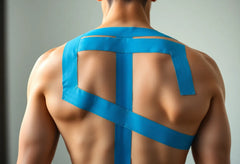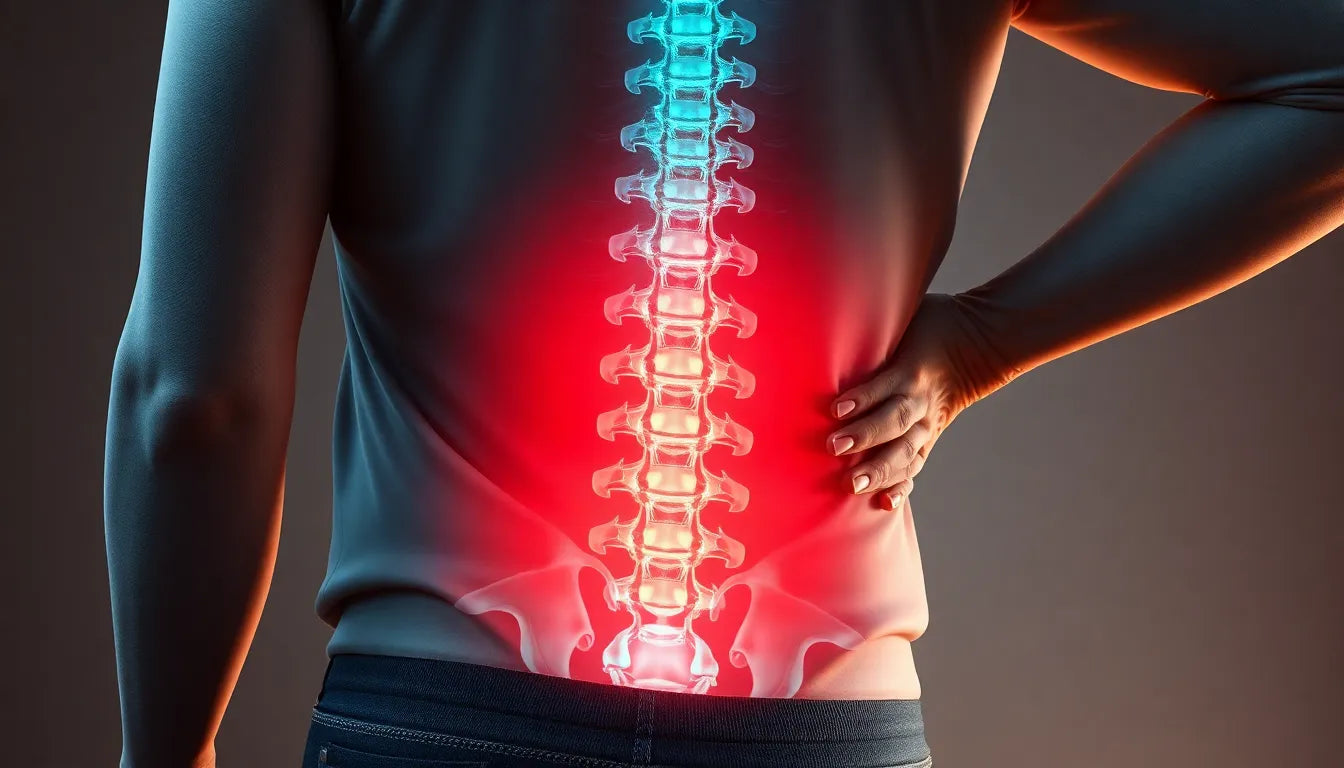A herniated disc, commonly referred to in medical terms as a herniated disc, is a condition that affects the spine and can lead to significant discomfort and mobility issues. Understanding what a herniated disc entails is crucial for anyone experiencing back pain or those who are at risk. Essentially, a herniated disc occurs when the soft inner gel of a spinal disc pushes through a crack in the tougher exterior casing. This can irritate nearby nerves and result in pain, numbness, or weakness in an arm or leg.
A herniated disc, commonly referred to in medical terms as a herniated disc, is a condition that affects the spine and can lead to significant discomfort and mobility issues. Understanding what a herniated disc entails is crucial for anyone experiencing back pain or those who are at risk. Essentially, a herniated disc occurs when the soft inner gel of a spinal disc pushes through a crack in the tougher exterior casing. This can irritate nearby nerves and result in pain, numbness, or weakness in an arm or leg.
The relevance of this condition extends beyond those directly affected, as it is a common ailment that can impact anyone, particularly adults between the ages of 30 and 50. Interestingly, statistics show that men are more prone to experiencing a herniated disc compared to women. This highlights the importance of awareness and early intervention, as timely diagnosis and treatment can significantly improve outcomes.
recognizing the symptoms of a herniated disc
Identifying the symptoms of a herniated disc is the first step towards seeking appropriate treatment. The most prevalent symptom is back pain, which may radiate to other areas, such as the arms or legs, depending on the location of the herniated disc. This radiating pain is often accompanied by sensations of numbness or tingling, and in some cases, muscle weakness. These symptoms can vary in intensity and duration, making it essential to pay attention to any persistent or severe discomfort.
Early detection is vital, as it allows for more effective management of the condition. Ignoring the initial signs can lead to complications and prolonged recovery times. Therefore, understanding these early indicators and seeking medical advice promptly can make a significant difference in managing a herniated disc.
aim of the blog post
The primary goal of this blog post is to provide readers with a comprehensive understanding of herniated discs. By exploring the causes, symptoms, and treatment options, we aim to equip individuals with the knowledge needed to make informed decisions about their health. Understanding the various solutions available for managing a herniated disc can empower individuals to take control of their condition and seek the best possible care.
In the following sections, we will delve deeper into the underlying causes of herniated discs, explore diagnostic procedures, and examine both conservative and surgical treatment options. Our objective is to bridge the gap between complex medical information and practical, actionable advice that can enhance the quality of life for those affected by this condition.
understanding the causes and pathophysiology of a herniated disc
A herniated disc occurs when the inner gel-like nucleus of a spinal disc breaches through its tougher outer layer, often due to wear and tear or sudden injury. This process is known as disc degeneration. Over time, discs lose water content, becoming less flexible and more prone to tearing or rupturing with even a minor strain or twist. This can lead to the nucleus pressing against spinal nerves, causing pain and discomfort.
Several risk factors can predispose individuals to a herniated disc. Age is a significant factor, with most cases occurring in people aged 30 to 50. Occupations or activities that involve repetitive lifting, bending, or twisting can increase the risk, as can lifestyle factors such as obesity and smoking. Genetics also play a role; some people inherit a predisposition to developing herniated discs.
diagnostic procedures for herniated discs
Accurate diagnosis is crucial for effective treatment of a herniated disc. Medical professionals typically begin with a physical examination to assess pain, reflexes, and muscle strength. However, imaging tests are essential for a definitive diagnosis. Magnetic Resonance Imaging (MRI) is the gold standard, providing detailed images of the spine and revealing the extent and location of the herniation. In some cases, a CT scan or X-ray may also be used to rule out other conditions.
Electromyography (EMG) and nerve conduction studies can further help assess nerve function and pinpoint areas of nerve damage. These diagnostic tools are vital in determining the best course of action for treatment.
treatment options: conservative vs. surgical
conservative treatment approaches
Most herniated discs can be managed with conservative treatments. Physical therapy is often the first line of defense, focusing on exercises to improve flexibility, strengthen the back and core muscles, and reduce pressure on the nerves. Pain management is another critical component, involving nonsteroidal anti-inflammatory drugs (NSAIDs), corticosteroid injections, or muscle relaxants to alleviate discomfort.
Self-care measures, such as applying heat or ice, maintaining good posture, and avoiding activities that exacerbate symptoms, are also recommended. These conservative methods are generally successful, with many patients experiencing relief within a few weeks to months.
surgical options for severe cases
Surgery is considered when conservative treatments fail or if the patient experiences severe neurological symptoms, such as significant weakness, loss of bladder or bowel control, or in the presence of cauda equina syndrome. The most common surgical procedure is a microdiscectomy, which involves removing the portion of the disc pressing on the nerve. Another option is spinal decompression, which relieves pressure on the spinal cord or nerves.
While surgery can provide immediate relief from symptoms, it is not without risks and typically requires a longer recovery period. Therefore, it is usually reserved for cases where the benefits outweigh the potential complications.
scientific perspective on treatment outcomes
Scientific studies have compared the outcomes of surgical versus conservative treatments for herniated discs. Research indicates that while surgery may offer quicker relief from symptoms, long-term outcomes are often similar between the two approaches. Patients who undergo conservative treatment tend to show significant improvement over time, with many avoiding the need for surgery altogether.
These findings underscore the importance of personalized treatment plans, taking into account the severity of symptoms, patient preferences, and overall health. Collaboration with healthcare professionals is key to determining the most appropriate strategy for managing a herniated disc.
In conclusion, understanding the causes, diagnostic procedures, and treatment options for herniated discs empowers individuals to make informed decisions about their health. Whether opting for conservative management or considering surgical intervention, early diagnosis and a tailored treatment plan can significantly enhance recovery and quality of life.
kritische bewertung von online-informationen zu herniated discs
In der heutigen digitalen Welt ist es einfacher denn je, Informationen über medizinische Zustände wie herniated discs online zu finden. Allerdings variiert die Qualität dieser Informationen erheblich. Viele Websites bieten fundierte, evidenzbasierte Inhalte, während andere eher kommerzielle Interessen verfolgen und weniger verlässliche Informationen bereitstellen. Es ist entscheidend, sich auf zuverlässige Quellen zu stützen, um Missverständnisse und Fehlinformationen zu vermeiden.
Um verlässliche Informationen zu erkennen, sollten Leser nach Artikeln suchen, die von medizinischen Fachleuten geschrieben oder überprüft wurden. Große Gesundheitsportale wie die Mayo Clinic oder WebMD sind oft gute Anlaufstellen, da sie umfassende und gut recherchierte Informationen bieten. Zudem sollte man auf die Aktualität der Informationen achten, da medizinische Erkenntnisse sich ständig weiterentwickeln.
praktische tipps und selbsthilfemaßnahmen bei einem herniated disc
Für Personen, die mit einem herniated disc leben, gibt es mehrere praktische Tipps und Selbsthilfemaßnahmen, die helfen können, die Symptome zu lindern und die Lebensqualität zu verbessern. Eine der wichtigsten Strategien ist die Ergonomie am Arbeitsplatz und zu Hause. Das bedeutet, dass man darauf achten sollte, dass Stühle und Schreibtische so eingestellt sind, dass sie eine gesunde Körperhaltung fördern.
Regelmäßige Bewegung ist ebenfalls entscheidend. Übungen, die die Flexibilität und Stärke der Rückenmuskulatur verbessern, können helfen, die Belastung der Wirbelsäule zu verringern. Aktivitäten wie Yoga oder Schwimmen sind oft besonders vorteilhaft. Darüber hinaus kann das Vermeiden von schwerem Heben und das Einhalten einer gesunden Körperhaltung im Alltag dazu beitragen, die Symptome zu minimieren.
abschließende gedanken
Ein herniated disc kann eine Herausforderung darstellen, aber mit dem richtigen Ansatz und einer aktiven Rolle in der eigenen Gesundheitsversorgung können Betroffene ihre Symptome effektiv managen. Ein individueller Behandlungsplan, der in Zusammenarbeit mit medizinischem Fachpersonal entwickelt wird, ist essenziell. Dies ermöglicht eine maßgeschneiderte Behandlung, die sowohl konservative als auch, falls nötig, chirurgische Optionen umfasst.
Es ist wichtig, proaktiv zu sein und die eigene Gesundheit ernst zu nehmen. Durch das Verständnis der verschiedenen Behandlungsmöglichkeiten und die Anwendung praktischer Tipps im Alltag können Betroffene die Kontrolle über ihre Situation erlangen und ihre Lebensqualität verbessern.
häufig gestellte fragen
what causes a herniated disc?
A herniated disc is primarily caused by wear and tear, known as disc degeneration, or by sudden injury.
is surgery always necessary for a herniated disc?
No, surgery is typically considered only if conservative treatments fail or in cases of severe neurological deficits.
how long does it take to recover from a herniated disc?
Recovery time varies; many recover with conservative treatment within a few weeks to months, while surgical recovery may take longer.
can lifestyle changes help manage a herniated disc?
Yes, maintaining a healthy weight, practicing good posture, and engaging in regular exercise can help manage symptoms and prevent further issues.
what are the warning signs that require immediate medical attention?
Severe pain, loss of bowel or bladder control, or significant weakness in the legs require urgent medical evaluation.
Quellen
- "Management of Lumbar Disc Herniation: A Systematic Review" (PMC).
- "Comprehensive Analysis of Treatment Approaches for Lumbar Disc Herniation" (PMC).
- "Herniated discs: when is surgery necessary?" (EOR).
- "Herniated disk - Diagnosis and treatment" (Mayo Clinic).
- "Surgical vs Nonoperative Treatment for Lumbar Disk Herniation" (JAMA).
- "Lumbar disc herniation: evaluation of information on the internet" (PubMed).
- "Review of Recent Treatment Strategies for Lumbar Disc Herniation" (MDPI).
- "Untersuchung von SERP-Funktionen" (SEMRush – für technische SERP-Analyse).























